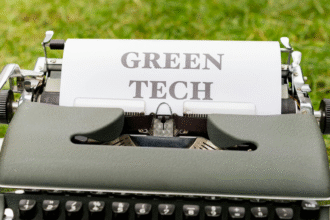Introduction
In today’s fast-paced digital economy, business tech is no longer a luxury—it’s a necessity for survival, scalability, and innovation. For small and medium-sized enterprises (SMEs), especially in the USA and UK, staying ahead in 2025 requires a clear and actionable plan powered by the right technology. Without a modern business tech foundation, SMEs risk falling behind in customer service, operational efficiency, and market competitiveness.
This article presents a practical and forward-thinking 2025 technology roadmap for SMEs. Whether you're preparing for major IT upgrades, exploring automation tools, or planning to buy an SME tech stack, understanding what technologies to adopt is critical. The goal isn’t to adopt every new trend but to build a lean, reliable, and scalable business tech ecosystem tailored to your business goals.
From accounting platforms like QuickBooks to remote work software and cybersecurity tools, the right business tech choices can transform how your team collaborates, how you serve customers, and how you grow sustainably.
If you’ve ever asked, “What tech should SMEs adopt in 2025?”—this guide has your answer. We’ll also share trusted resources like local business portals to help you make informed decisions. Let’s build a roadmap that positions your business for long-term success in a digital-first world.
Why Small Businesses Need a 2025 Business Tech Roadmap
The pace of innovation has accelerated dramatically post-pandemic. Remote work, AI integration, data privacy laws, and customer expectations are reshaping industries. Small businesses are no longer immune to these shifts.
SMEs in the USA and UK must act now. According to McKinsey, companies that embrace digital transformation grow revenues 2–3x faster than their peers. But transformation without a clear business tech strategy leads to wasted investments and fragmented systems.
A 2025 technology roadmap for SMEs provides a structured plan to upgrade tools, streamline workflows, and integrate scalable solutions tailored to each business's needs.
Key IT Upgrades for SMEs in 2025
IT is no longer a back-office function. It's your front-line defense, your productivity engine, and your customer experience enabler. Here are the IT upgrades every small business must prioritize:
1. Cloud Migration & Infrastructure
- Migrate on-prem systems to scalable cloud solutions like AWS, Google Cloud, or Microsoft Azure.
- Use hybrid cloud setups for secure and efficient data management.
2. Cybersecurity Enhancements
- Implement zero-trust frameworks.
- Use multi-factor authentication and endpoint detection tools like CrowdStrike.
3. Remote Collaboration Tools
- Adopt platforms like Slack, Zoom, and Asana to support hybrid teams.
- Use time tracking and reporting tools to enhance accountability.
Many SMEs also benefit from tools that don’t rely on constant internet connectivity, especially in remote regions or while traveling. For such cases, here’s a curated list of the Best Offline Productivity Apps in 2025 to keep your workflow uninterrupted.
4. Automated Backup and Disaster Recovery
- Invest in automated solutions like Veeam or Acronis for business continuity.
- This is critical for SMEs in regions with fluctuating connectivity or weather conditions.
These IT upgrades are no longer optional. They form the foundation of a resilient business tech environment.
What Tech Should SMEs Adopt in 2025?
One of the most common questions small business owners ask is:
“What tech should SMEs adopt to stay competitive?”
Here’s a categorized breakdown of essential technologies in 2025:
Customer Relationship Management (CRM)
- HubSpot CRM (great for inbound marketing).
- Zoho CRM (budget-friendly and customizable).
E-Commerce & Point of Sale (POS)
- Shopify, WooCommerce, and Square POS help SMEs sell both online and in-store seamlessly.
Business Intelligence & Analytics
- Tools like Tableau and Power BI allow real-time insights into customer behavior and financial health.
Social Media & Digital Marketing
- Buffer, Canva, and Hootsuite for campaign planning, content creation, and automation.
Accounting & Payroll
- QuickBooks remains the top choice among SMEs due to its ease of use, automation features, and tax compliance tools (especially in the USA and UK).
Must-Have Tools in the SME Tech Stack (and Where to Buy)
When it comes to choosing and buying an SME tech stack, many business owners feel overwhelmed. Here are tools you should prioritize—and where to get them:
| Category | Tool | Where to Buy |
|---|---|---|
| Project Management | ClickUp | Official website or AppSumo Deals |
| Accounting | QuickBooks | Intuit official site |
| CRM | Zoho CRM | Zoho.com |
| HR & Payroll | Gusto, Deel | Gusto.com, Deel.com |
| Email Marketing | Mailchimp | Official site |
| E-commerce | Shopify | Shopify.com |
Purchasing via authorized vendors or local business portals can also help SMEs get discounts and support.
Leveraging Local Business Portals for Tech Discovery
Many small businesses overlook the power of local business portals. These platforms often offer:
- Regional tech vendor directories
- Government-sponsored digital adoption grants
- Free or subsidized tech training programs
Examples include:
- USA: SBA.gov, Local Chamber of Commerce portals, Score.org
- UK: gov.uk's “Help to Grow: Digital” portal, Federation of Small Businesses (FSB)
Using navigational keywords like “local business portals” in search engines can help you find regional resources that suit your industry and size.
Spotlight: QuickBooks and Its Role in the 2025 Business Tech Landscape
No business tech roadmap would be complete without talking about QuickBooks. As a branded accounting solution trusted by millions, it continues to evolve in 2025 with:
- Full AI-powered forecasting and budgeting
- Automated tax calculations compliant with UK VAT and USA IRS systems
- Integration with payroll, banking, and CRM tools
Whether you're a solo entrepreneur or a 50-person team, QuickBooks simplifies finances and scales with your business.
Its dominance in both USA and UK makes it the ideal choice for SMEs looking for a reliable accounting backbone.
Region-Specific Tech Advice for USA and UK SMEs
🇺🇸 For US-Based SMEs
- Focus on tools that integrate with IRS-compliant tax filing.
- Remote work is more prevalent, so prioritize collaboration software.
- Use SBA tools and federal grants to fund tech upgrades.
🇬🇧 For UK-Based SMEs
- Embrace Making Tax Digital (MTD) tools like QuickBooks MTD edition.
- Evaluate GDPR-compliant CRM and email marketing platforms.
- Explore “Help to Grow” programs and Innovate UK funding for digitization.
A Future-Proof Business Tech Strategy (Evergreen Tips)
Creating a future-proof business tech strategy means investing not only in tools but also in culture and adaptability.
Here are some evergreen tech practices for SMEs:
✅ Invest in Scalable Solutions
- Choose software that grows with your company, avoiding tools that cap features after basic tiers.
✅ Prioritize Training and Adoption
- A great tool is useless if your team doesn't know how to use it. Offer regular tech upskilling workshops.
Monitor Trends Continuously
- Follow reliable industry sites like TechCrunch, Trendimint, and Wired.
Establish a Quarterly Tech Review
- Evaluate tool performance, team feedback, and ROI every quarter.
- Replace outdated tools before they become bottlenecks.
Final Thoughts: Planning Your 2025 Tech Roadmap
The future of small business lies in strategic technology adoption. A well-defined business tech roadmap is no longer optional—it’s essential for growth, resilience, and competitiveness. As we move deeper into 2025, small and medium-sized enterprises (SMEs) in the USA and UK must prioritize technologies that align with their goals and scale with their needs.
From upgrading IT infrastructure to adopting intelligent tools like QuickBooks, and embracing cloud-based CRMs or digital collaboration platforms, the options are vast. However, the key is not to adopt everything—but to adopt smartly. Focus on tools that deliver real ROI, improve workflow efficiency, and enhance customer experiences. Whether you're planning to buy an SME tech stack, explore local business portals, or implement critical IT upgrades, having a clear and flexible roadmap will keep your business agile and future-ready.
Additionally, not every business environment has reliable internet access—especially for teams working remotely or on the go. In such cases, productivity shouldn’t suffer. Be sure to check out our curated list of Offline Tools and Best Productivity Apps for 2025 to ensure you stay productive—anytime, anywhere.
Ultimately, adopting the right business tech is an investment in long-term success. Take action now to future-proof your SME and thrive in an increasingly digital economy.






